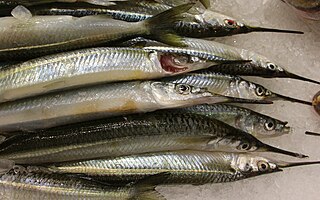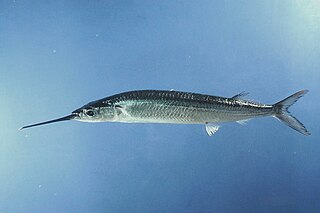 W
WHyporhamphus is a genus of halfbeaks. The species in this genus are distributed throughout the warmer seas of the world, most species being Indo-Pacific and there are some freshwater species.
 W
WThe American halfbeak, also known as Meek's halfbeak, is a halfbeak from the family Hemiramphidae.
 W
WHyporhamphus australis is a halfbeak garfish from the family Hemiramphidae. It is found in Australian waters. Also recorded at Lord Howe Island and Norfolk Island.
 W
WThe Dussumier's halfbeak, also known as the slender garfish, lives in reefs and shallow lagoons. It is an Indo-Pacific species which is found from the Seychelles east to the Tuamotu Islands, north to Hong Kong and Okinawa and south to northern Australia. They form schools which are found near the surface of lagoons and seaward reefs. The longest known specimen was 38.0 cm in length. This species was described by Achille Valenciennes in 1847 with the type locality given as the Seychelles. The specific name honours the French voyager and merchant Jean-Jacques Dussumier (1792-1883).
 W
WHyporhamphus ihi, the garfish or piper, is a halfbeak found all around New Zealand in shallow inshore waters.
 W
WHyporhamphus melanochir is a halfbeak garfish from the family Hemiramphidae. It is found in Australian and New Zealand waters.
 W
WHyporhamphus regularis is a halfbeak garfish from the family Hemiramphidae. It is found in Australian waters. The red tip on the lower jaw is an identification feature.
 W
WHyporhamphus unifasciatus, the common halfbeak or the Atlantic silverstripe halfbeak, is a bony fish in the family Hemiramphidae. It is found in the subtropical western Atlantic Ocean and the Gulf of Mexico. It is a common fish and not used for food to any great extent, and the International Union for Conservation of Nature has listed its conservation status as being of "least concern".